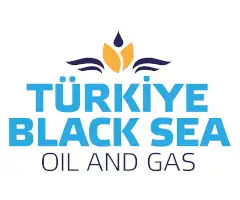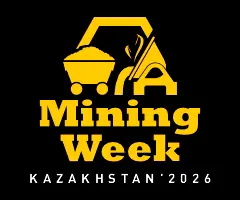Modeling of thermal conditions for ore stockpile in heap leaching of gold in cold climates
 M.V. Kaimonov , A.I. Matveev, D.V. Hosoev
M.V. Kaimonov , A.I. Matveev, D.V. Hosoev
Institute of Mining of the North named after N.V. Chersky of the Siberian Branch of the Russian Academy of Sciences, Yakutsk, Russian Federation
Russian Mining Industry №1 / 2025 p. 102-108
Abstract: The paper presents the results of research, which primary practical goal is wide implementation of the heap leaching technology in areas with harsh climatic conditions, i.e. presence of permafrost and long winter periods. The main limiting factor for applying the method in regions with cold climate is that the leaching efficiency of any type of gold-bearing ores considerably depends on the temperature conditions of the ore stockpiled and the leaching solution, which in turn determines the seasonal nature (only in the Summer months) of gold mining operations utilizing the heap leaching technology. Appropriate physical properties need to be set for all the materials available in the area to be modeled. The boundary conditions also have to be defined for all heat transfer conditions used in the model. Modeling of the leaching solution filtration in the Frost.Thermo software suite is based on the extensively tested equation for groundwater filtration derived from the Darcy law. Solution of the thermal conductivity equation in the 3D formulation is carried out numerically using the explicit method of finite differences. According to the results of computer modeling in the Frost 3D software suite, emergency failure of the thermal insulation coating on the stockpile surface leads to freezing of the rocks in the stockpile down to a considerable depth. Calculations of the thermal conditions of the ore stockpile have been carried out for different conditions of its surface thermal insulation. The most optimal method to thermally insulate the walls of the stockpile is to cover the slopes (walls) of its lower tier with a 1-meter thick snow layer, while the slopes (walls) of the upper tiers should be insulated with a film having an air interlayer of 3 cm.
Keywords: heap leaching, permafrost zone, ore stockpile, thermal insulation, freezing depth, thermal conditions, 3D modeling
Acknowledgments: The work was carried out under a research project using the equipment of the Shared Research Center of the Yakutsk Federal Research Center of the Siberian Branch of the Russian Academy of Sciences. The research results were obtained as part of the Program for Integrated Scientific Research in the Republic of Sakha (Yakutia) aimed at the development of productive forces and social sphere for 2021-2024 (Project No. 4, Phase 2, EGISU NIOCTR No. AAAA-B-17-217060520052-0).
For citation: Kaimonov M.V., Matveev A.I., Hosoev D.V. Modeling of thermal conditions for ore stockpile in heap leaching of gold in cold climates. Russian Mining Industry. 2025;(1):102–108. (In Russ.) https://doi.org/10.30686/1609-9192-2025-1-102-108
Article info
Received: 13.11.2024
Revised: 09.01.2025
Accepted: 10.01.2025
Information about the authors
Mikhail V. Kaimonov – Cand. Sci. (Eng.), Senior Researcher, Institute of Mining of the North named after N.V. Chersky, Siberian Branch of the Russian Academy of Sciences, Yakutsk, Russian Federation; https://orcid.org/0000-0002-2506-8349; e-mail: This email address is being protected from spambots. You need JavaScript enabled to view it.
Andrey I. Matveev – Dr. Sci. (Eng.), leading researcher, Institute of Mining of the North named after N.V. Chersky, Siberian Branch of the Russian Academy of Sciences, Yakutsk, Russian Federation; https://orcid.org/0000-0002-4298-5990; e-mail: This email address is being protected from spambots. You need JavaScript enabled to view it.
Dorzho V. Hosoev – Junior Research Fellow, Institute of Mining of the North named after N.V. Chersky, Siberian Branch of the Russian Academy of Sciences, Yakutsk, Russian Federation; e-mail: This email address is being protected from spambots. You need JavaScript enabled to view it.
References
1. Medina D., Anderson C.G. A review of the cyanidation treatment of copper-gold ores and concentrates. Metals. 2020;10(7):897. https://doi.org/10.3390/met10070897
2. Ghorbani Y., Franzidis J.-P., Petersen J. Heap leaching technology – current state, innovations, and future directions: A review. Mineral Processing and Extractive Metallurgy Review. 2016;37(2):73–119. https://doi.org/10.1080/08827508.2015.1115990
3. Mellado M.E., Cisternas L.A., Lucay F.A., Gálvez E.D., Sepúlveda F.D. A posteriori analysis of analytical models for heap leaching using uncertainty and global sensitivity analyses. Minerals. 2018;8(2):44. https://doi.org/10.3390/min8020044
4. Ordóñez J.I., Condori A., Moreno L., Cisternas L.A. Heap leaching of caliche ore. modeling of a multicomponent system with particle size distribution. Minerals. 2017;7(10):180. https://doi.org/10.3390/min7100180
5. Robertson S.W., van Staden P.J., Cherkaev A., Petersen J. Properties governing the flow of solution through crushed ore for heap leaching. Hydrometallurgy. 2022;208:105811. https://doi.org/10.1016/j.hydromet.2021.105811
6. Маринин М.А., Карасев М.А., Поспехов Г.Б., Поморцева А.А., Кондакова В.Н., Сушкова В.И. Комплексное изучение фильтрационных свойств окомкованных песчано-глинистых руд и режимов фильтрации в штабеле кучного выщелачивания. Записки Горного института. 2023;259:30–40. https://doi.org/10.31897/PMI.2023.7 Marinin M.A., Karasev M.A., Pospehov G.B., Pomortseva A.A., Kondakova V.N., Sushkova V.I. Comprehensive study of filtration properties of pelletized sandy clay ores and filtration modes in the heap leaching stack. Journal of Mining Institute. 2023;259:30–40. https://doi.org/10.31897/PMI.2023.7
7. Хабиров В.В., Забельский В.К., Воробьёв А.Е. Прогрессивные технологии добычи и переработки золотосодержащего сырья. М.: Недра; 1994. 268 с. Режим доступа: https://www.geokniga.org/books/2420 (дата обращения: 17.12.2024).
8. Игнатов А.А. Физико-химические процессы горного производства: математические модели выщелачивания руд и оттаивания мерзлых пород. М.: Наука; 1986. 96 с.
9. Татауров С.Б. Трансформация и переработка золотосодержащего сырья в криолитозоне. М.: Горная книга; 2008. 318 с.
10. Татаринов С.М., Хомутов А.В., Косякова О.В., Седых В.И. Применение кучного выщелачивания золота в условиях Крайнего Севера. Цветные металлы. 2010;(11):44–46. Режим доступа: https://rudmet.net/journal/488/article/4755/ (дата обращения: 17.12.2024). Tatarinov S.M., Khomutov A.V., Kosyakova O.V., Sedykh V.I. Usage of heap leaching of gold in the conditions of High North. Tsvetnye Metally. 2010;(11):44–46. (In Russ.) Available at: https://rudmet.net/journal/488/article/4755/ (accessed: 17.12.2024).
11. Ковалёв В.Н., Муслимов Б.А., Клепиков А.С. Математическое моделирование кучного выщелачивания золота в зонах многолетней мерзлоты. Горный журнал. 2013;(7):37–40. Режим доступа: https://rudmet.net/journal/1212/article/20548/ (дата обращения: 17.12.2024). Kovalev V.N., Muslimov B.A., Klepikov A.S. Mathematical modeling of gold heap leaching in permafrost zones. Gornyi Zhurnal. 2013;(7):37–40. (In Russ.) Available at: https://rudmet.net/journal/1212/article/20548/ (accessed: 17.12.2024).
12. Кашуба С.Г., Лесков М.И. Кучное выщелачивание в российской практике – обзор опыта и анализ перспектив. Золото и технологии. 2014;(1):10–14. Режим доступа: https://zolteh.ru/technology_equipment/kuchnoe_vyshchelachivanie_v_rossiyskoy_praktike_obzor_opyta_i_analiz_perspektiv/ (дата обращения: 17.12.2024). Kashuba S.G., Leskov M.I. Heap leaching in the Russian practice: a review of experience and analysis of prospects. Zoloto i Tekhnologii. 2014;(1):10–14. (In Russ.) Available at: https://zolteh.ru/technology_equipment/kuchnoe_vyshchelachivanie_v_rossiyskoy_praktike_obzor_opyta_i_analiz_perspektiv/ (accessed: 17.12.2024).
13. McBride D., Gebhardt J.E., Croft T.N., Cross M. Modeling the hydrodynamics of heap leaching in sub-zero temperatures. Minerals Engineering. 2016;90:77–88. https://doi.org/10.1016/j.mineng.2015.11.005
14. McBride D., Gebhardt J., Croft N., Cross M. Heap leaching: Modelling and forecasting using CFD technology. Minerals. 2018;8(1):9. https://doi.org/10.3390/min8010009
15. Попов В.И., Каймонов М.В. Определение оптимальных параметров процесса выщелачивания в рудном штабеле при отрицательных температурах окружающей среды. Горный информационно-аналитический бюллетень. 2017;(S24):292–298. https://doi.org/10.25018/0236-1493-2017-11-24-292-298 Popov V.I., Kaimonov M.V. Determination of the optimal parameters of the process of leaching in stack of ore with negative temperatures of the environment. Mining Informational and Analytical Bulletin. 2017;(S24):292–298. (In Russ.) https://doi.org/10.25018/0236-1493-2017-11-24-292-298
16. Перльштейн Г.З. Водно-тепловая мелиорация мерзлых пород на Северо-Востоке СССР. Новосибирск: Наука. Сиб. отд-ние; 1979. 304 с.
17. Павлов А.В. Расчет и регулирование мерзлотного режима почвы. Новосибирск: Наука. Сиб. отд-ние; 1980. 240 с.
18. Гаврильев Р.И. Теплофизические свойства компонентов природной среды в криолитозоне. Новосибирск: Изд-во СО РАН; 2004. 145 с.
19. Фельдман Г.М., Тетельбаум А.С., Шендер Н.И., Гаврильев Р.И. Пособие по прогнозу температурного режима грунтов Якутии. Якутск: Ин-т мерзлотоведения; 1988. 240 с.
20. Курилко А.С., Ермаков С.А., Хохолов Ю.А., Каймонов М.В., Бураков А.М. Моделирование тепловых процессов в горном массиве при открытой разработке россыпей криолитозоны. Новосибирск: Гео; 2011. 139 с. Режим доступа: https://igds.ysn.ru/themes/IGDS/images/Monografii/Kurilko.pdf (дата обращения: 17.12.2024).




